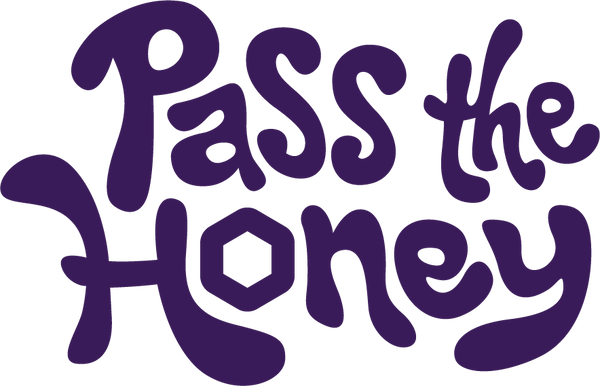Darker honey and darker combs have more intense flavors, while lighter-colored varieties will have a more delicate taste, like Pass the Honey. Fresh honeycomb is unfiltered, untouched comb honey, which means there are beautifully complex flavors and textures at play, each waiting to be appreciated by a discerning palate.
There are several factors that can elevate a good-tasting honeycomb to a great-tasting honeycomb. The composition of honeycomb varies depending on the source of the nectar and the type of soil, climate, wind, and sun that the plant is exposed to during a season. Of course, how well the honeycomb is harvested and stored also influences honeycomb composition. When we describe the taste of comb honey, we are referring to more than just its sweetness; we are referring to a fullness of flavor. Honeycomb, like liquid honey, is sweet but what sets it apart is flavor and texture. Great honeycomb has layers of flavor that cannot be found in any other sweetener. The thin walls of each comb cell give texture and body to what is normally a slippery, sticky syrup, offering a truly delicious experience.
Grassy, earthy, floral, and fruity are just some of the flavor notes you will encounter when tasting honey. Our honeycomb’s light, floral flavor is decadent yet subtle, soothing yet surprising. When the fragile beeswax comb is sliced or spread, the fresh liquid honey oozes out of each cell. The flavor is extremely delicate, and the waxy texture contrasts nicely on the palate with the smooth, velvety honey, providing a texture experience of smooth and chewy all in one bite. The wax comb often resembles more savory undertones while the liquid honey provides a bright sweetness that is a sure bet for balance.
As honeycomb establishes its place in the culinary world, its future lies in the recognition and appreciation of the wide variety of flavor profiles and the many wonderful ways these flavors can pair with and enhance the taste of other foods. Sensory analysis is the intimate exploration and appraisal of a food, beverage – in this case, honeycomb – by engaging all the senses to determine what flavors are present, their intensities, and the order of their appearance during the tasting process. There are a few key elements we look for when creating a sensory analysis of comb honey: color, clarity and consistency, aroma, viscosity and texture, taste, and flavor.

Our Flavor Profile
- Color: Pale Yellow, Straw Color, Marigold, and Butterscotch
- Clarity and Consistency: Glistening, Bright like sunshine, Transparent as glass
- Aroma: Weak to Medium, Hay/Straw, Floral, Woody/Earthy, Clover
- Texture: Medium bodies, Velvety, Jammy, Buttery
- Taste + Flavor:
- Beginning: Warm, Honeysuckle, Carmel
- Middle: Dried Citrus, Pineapple, Orange, Apricots
- End: Brown Sugar, Sweet
- Wax comb: clover, hay, herbal
The gorgeous pale yellow, straw color is medium white on the Pfund chart and transparent as glass. It has a striking resemblance to marigold or butterscotch with a tint of orange hues. Dip your nose into a cup of Pass the Honey, and you’ll be greeted by subtle hints of hay, with undercurrents of clover, floral, and woodsy notes. It’s buttery and velvety on the tongue until it bursts into jammy notes of orange and apricot. The rapture continues with subtle notes of caramel and honeysuckle that harmonize with the tartness from dried citrus and pineapple notes. The honeycomb finishes with hay, brown sugar, and clover notes leaving a sweet lingering flavor in the back of your throat. While this honey is relatively light bodied, it rounds out with the perfect balance between earthy flavors, tart fruits, and sweet baking candies.
To top it off, these single-serving pieces of golden goodness are pesticide, GMO, and chemical-free, produced by bees far away from industrial areas, unlike 80% of liquid honey sold on U.S. store shelves.

